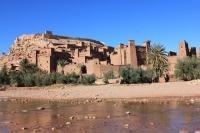
I visited this site on a day trip from Marrakesh. I rented a car for the day and went on the Tizi-N-Tichka Atlas pass. It lies at 2260 m, with great view on the Altlas range, before dropping in the desert. I went in January 2011 and had no trouble, but it might be closed in case of snow.
The kfar is on a dirt road (easy to ride with a regular car) off the Marrakes-Ouarzazate road. Well sign-posted.
There is a car park (pay the attendant as you leave) and then walk down to the river. The river is easy to cross on a cement-stoned ford, even if locals tell you to hire a camel.
You can then enter the kfar from four different entrances, some with entry fees, some free. Don’t bother finding the free one, as the fee is only about 1$.
This mud castle is overwhelming. Once in the castle, the marchants are not aggressive (changes from Marrakesh) and you are able to visit hassle-free the site. Climb on towers, visit rooms. You can really feel like in the numerous movies that have been filmed here (Lawrence of Arabia, Alexander, Gladiator…)
Be sure to climb all the way to the top of the hill for fine views on the valley and the Atlas.
A must-do from Marrakesh.
Keep reading 0 comments
I travel to Tel Aviv more than 10 years ago, before it was inscribed to the WHL. I went back in June 2011 and wanted to have a closer look at the « white city ». I went first to the Bauhaus museum, and bought a detailed map showing all the protected buildings and the site limit with the buffer zone. From there I went on walks around, trying to discover the buildings listed on the map. Some are in bad need of repair.
Some are well known and figure in all travel guides (Dizengoff Square, Thermomether House). But most just lie waiting to be discovered along walks. I really enjoy this king of heritage site where you can wander around.
By the way, you can even stay in some Bauhaus-hotels (protected and part of the site), for example the Hotel Cinema, part of the Atlas chain.
Keep reading 0 comments
Divrigi is about 600 kilometers from Ankara, so it takes a little while to get there by car. I'm sure you can get there by bus, but it would be quite a long haul. The town of Divrigi is a small village perched on a hillside and the fall was the perfect time to go. I will say the signage to teh Mosque and hospital complex was a little lacking, but it is a small town, so we did find it. Using the word "complex", I expected a larger area then the one building that housed both of the facilities. The outside of the building is pretty non-descript until you get up close to the doors. There were so many carvings and it was so intricately done. They were gorgeous! The first part is the mental hospital, and going inside there are carved columns and a few tombs. Next door was the mosque and it is very much in use today, so it's best to stay away during prayer times. There was no cost to enter this site, but there was a small tea kiosk inside the walls. We felt obligated to buy a cup of tea and watch the visitors that came. There was only one other foreigner there, a European. I wouldn't say this was one of the most interesting World Heritage Sites in Turkey, but I probably would not have made the effort to go otherwise, and honestly that would have been dissappointing, because I had not …
Keep reading 0 comments
I traveled from Pakse to Vat Phou by motorbike. The countryside was very beautiful and interesting... The villages we passed looked like people were living as they had been living for hundreds of years.
I was fortunate to meet an archeologist in the high complex who was kind enough to show me around and explain the significance of the site. He said this was where the Khmer kings came to be "cleansed" before beginning their reign. So I imagined I was there as a preparation for the big exploration in Cambodia...
Vat Phou itself is small and demure compared to the majesty of the Khmer cities in Cambodia so I recommend seeing Vat Phou first as kind of a preview of things to come in Cambodia.
Keep reading 0 comments
I am married to a Lithuanian lady ,we go there regually to visit her family. On one such visit we holidayed in Nida on the Curonian Spit.As an Englishman I have never seen the like in England.You sit down for breakfast in a modernish restaurant then take a walk for about a mile and you have gone back 200 years in time. For me the most peaceful and tranquil place on earth.
Keep reading 0 comments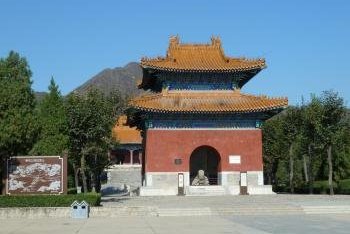
Well this is the best review I can give. It is based on the 15 minutes during which I was given a dull tour of a few reconstructed buildings. From speaking to other later this seems to be the general experience of visiting this complex on the combined 'Ming Tombs and Great Wall' tours offered from Beijing. I managed to see about 5 buildings and caught glimpses of some stone statues and that was about it. We spent about 5 minutes looking at some plastic food set out like a royal feast, there was a dummy of an Emperor then we were whisked out. I later found out this was the Changling tomb which seems to be the highlight of the area.
Our tour guide seemed genuinely miffed that we wanted to see some more, and did sincerely seem to believe that we would spend our time better in the Pearl factory, Tea factory and Jade factory that took up more of the day trip than the actual sites. I know he was receiving commission at these factories but even factoring that in there was little regard shown for this site.
If you have an actual interest in this site then try to get there under your own steam rather than as a stop on a Great Wall tour. As for me, I would have liked to have seen the spirit way but I don't think I will be rushing back, as from what I have read the mediocre offerings …
Keep reading 0 comments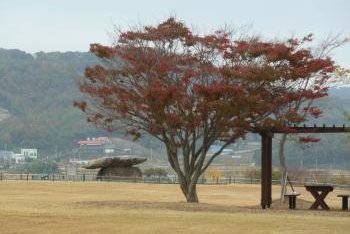
The main thing that struck me was how delicate this structure looked despite the massive size of its capstone, it was perched like a delicate Brancusi sulpture. Ganghwa island is littered with megaliths and if you really were keen this would be a good place to go exploring, apparently it is one of the densest concentrations in the world. As for me, I was here just to see the big one, which is now in a well-manicured park which does contain another standing stone (also part of the WHS).
My visit was a little brief as the weather wasn’t so nice, but the warm welcome and free cup of coffee from the friendly information centre kept me going. There is also a pretty new local history museum next door, but it was closed on the day I visited (Monday). There are regular buses from Ganghwa bus station; just asking for ‘Goindol’ got me on the right bus.
I wouldn’t say this would be most people’s highlight of Korea, but it was a nice place to head to on a quiet, slow and slightly gloomy day, it helped me recharge my batteries to gear me up for the delights of Seoul.
[Site 3: Experience 4]
Keep reading 0 comments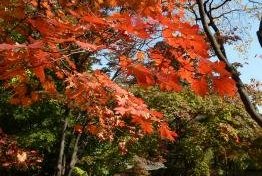
Palaces and me are not the greatest mix, as such I focused my visit here on the picturesque Biwon/ Huwon (Secret Garden) at the rear of the complex. I visited in autumn and the dazzling array of colours in the bright sunshine really made this a lovely place to stroll around and take an inordinate amount of pictures. I really enjoyed just sitting and relaxing next to the small pavilions overlooking the ponds and valleys that litter the gardens, reading a book and taking in the amazing foliage. Access to the Gardens was by guided tour but it was pretty relaxed and if you wanted to just slink off it didn't seem to cause any problems.
Thankfully the powers that be seem to have removed the need to visit the palace only on a guided tour, and now you are free to wander at your leisure. It was rather nice, reminding me of the structures I had seen at the Forbidden City the week before, but here the atmosphere was a little more tranquil.
All in all this was a nice place to spend a few slow hours admiring the wonderful trees, and as there is another WHS just across the road it makes a good place to get your fill of the royal roots of Seoul.
[Site 6: Experience 7]
Keep reading 0 comments
Cuenca is the most touristy town that I have encountered so far on this trip. Its forte is ‘location, location, location’ – even the AB evaluation couldn’t get much further than appraising the synergy of the man-made constructions with the natural landscape. The rocky hill on which it is located has very steep slopes, so even in the old city center you keep on climbing.
There’s not a whole lot more to see than views of the houses that cling to the rocks or over the surrounding countryside. I had to wait 30 minutes before my hotel room was ready, and in the meantime, I managed to take in all major viewpoints including the one from the large bridge that crosses the ravine. Some groups of houses are painted in various bright colours, which is definitely picturesque.
The surprising highlight of Cuenca for me was the Cathedral. Its façade dates from the early 20th century and is a weird kind of Neo-Gothic: it looks like part of it has blown away. Its interior is a whole different story. They charge a 3.80 EUR entrance fee which includes an audioguide. Both are quite unusual for a religious building, but as you step in further it immediately becomes clear that behind the entrance lies a wealth of medieval and renaissance art. The decoration is very exuberant, both in colours and in ornamentation. The audio tour has no less than 37 stops and doesn’t even cover all chapels. Its showpiece is …
Keep reading 0 comments
In preparation of this trip, I had been researching the 'Mudéjar' concept for a bit, as I knew nothing about it. The difference with the famous Moorish architecture in Spain (the Alhambra for example) is that Mudéjar is a fusion style between Islamic and Christian traditions. It evolved in areas where the Christians reconquered land from the Moors from the 12th century on. Islamic craftsmen and builders kept on working, and the new churches that were built copied the structure and decoration of minarets. Then they added gothic or baroque ornaments and included Christian imagery.
I only visited the town of Teruel out of this serial nomination covering 5 separate cities. Teruel is the site of the original nomination from 1986, and also the one with the earliest surviving examples of Mudéjar architecture. I drove there from Valencia Airport, and on the way, I encountered already many towns with the characteristic minaret-like bell towers. They are slim and tall, made out of brick and decorated with glazed tiles. This motorway is aptly named 'Autovia de Mudejar'.
Teruel has two free-standing Mudéjar towers and two more adjacent to churches. On the approach to the city center, the panorama is excellent, with oriental, exotic touches. Up close the towers appear well-cared for, sometimes in stark contrast with the surrounding dilapidating modern structures.
I also entered both nominated churches in Teruel. The cathedral has a completely decorated wooden ceiling, which is praised as thé number one Mudéjar remain. However you …
Keep reading 0 comments
The AB evaluation of Aranjuez comes with a warning: we already have allowed 8 European Royal Palaces and their gardens on the List, this should be sufficient! The Spanish however were clever enough to propose this site as a Cultural Landscape, where the palace comes in as a side note. I found the nomination file very impressive; it does a good job of explaining the history of the manmade landscape, where the use of irrigation and dams has turned a swamp into a green oasis. It also emphasizes the importance of the parks for botany, as Philip II was an early collector of American and Asian tree species.
Except for a minor round around Aranjuez town to look for a restaurant (where I landed at the recommended La Venta for a 10 EUR 3-course Menu del Dia), I limited my visit to the palace and its gardens. I started with a stroll through the Island Garden, which is decorated with many objects including a number of statues of ancient gods. This is also where the waterworks can be seen, these include dams, canals, and bridges. And it displays the tree-lined paths that characterize Aranjuez.
Suddenly it started to rain a little, so I decided to check out the interior of the palace too. Whenever I visit palaces these days, Ian Cade's quote "palaces bore me rigid" directly comes to my mind. And yes, I too have shuffled from one boring room to the other in many palaces around …
Keep reading 0 comments
This is only one building, so my visit wasn't too long. At the entrance, I opted for the guided tour, which turned out to be very informative and was conducted (in Spanish) on a one-to-one basis. The start of the tour is in the main hall, which I also found to be the most impressive part of the building. It is no coincidence that it looks like the interior of a cathedral, as the wealthy merchants decided to emulate the religious symbolism because their trade was looked down upon.
The large, spiralled columns that dominate this hall represent palm trees: the columns used to be painted brown, their tops green and the ceiling sky blue. What a difference that must have been! Now all is the same kind of grey, a bit like when you're visiting Roman ruins and all those monuments look the same colour too.
The rest of the complex consists of a courtyard, a chapel (with a pretty Renaissance wooden ceiling) and the tribunal room on the second floor (also with an excellent ceiling). Although the main rooms are quite empty and austere, in the corners, around doors and windows, there are tiny sculptures. They often are grotesques and it is a delight to check them out. Actually, I visited La Lonja twice (the batteries of my camera ran out halfway during the first visit) and didn't regret it. There are a lot of interesting details, and I liked the atmosphere in the evening when …
Keep reading 0 comments
Alcalá de Henares wasn’t quite what I had expected. University towns usually have a distinct atmosphere: cozy, lots of young people, interesting museums, small budget restaurants. The thing about Alcalá de Henares is that its university was moved to Madrid in 1836. Only recently, in 1977, a new university has been set up. But a lot of damage had been done in the 1.5 century in between.
After leaving my rental car in an underground car park, I set out for the city center. Information boards in Spanish, English and Braille guide the visitors along to the most important things to see. You’ll definitely need this guidance or bring your own map, as the highlights are somewhat hidden between the dull features of another provincial town. The cityscape isn’t very coherent, because of the many demolitions and modern reconstructions that were executed before they thought of conserving the place. ICOMOS in its AB evaluation states that the city has retained “a substantial degree of authenticity” - which I think is a euphemism.
I first walked to the Archbishop’s Palace. A very fine building with Mudéjar elements. The three trees in front of it in full autumn colours, a couple of passing nuns and dozens of storks nestled on the surrounding roofs gave it a bit extra. In the same area lies the Cathedral. It’s a Magistrial Cathedral, which means that the priests are also professors in University. It is known for its elaborate iron fence (?!). In the …
Keep reading 0 comments
Out of the 727 nominated locations, I visited 4 or 5 panels in the Sierra de Albarracín. I say “4 or 5”, as I couldn’t identify the 5th on the long list of sites. But they are all in the same area, in a protected zone called Pinar del Rodeno. This is a popular hiking and climbing destination for Spanish tourists.
I started at the “Abrigo de la fuente del Cabrerizo”. This one is located about 4km south of the town of Albarracín. There’s a sign from the road and a small parking lot. You then have to hike downhill for about 20 minutes. First, you pass a good viewpoint with views of the red rocks and the maritime pines that are characteristic of this landscape. Then the path worsens and gets muddy and narrow. I wondered how many people go out all the way to see the rock paintings here. Fortunately, there are red arrows that show the way so you will not get lost. The paintings are protected by a red fence, and there is an information panel (in Spanish) about what you see. If you are able to see them at all, as they have no colour and are merely the outlines of animals. Pretty disappointing, but I had my daily exercise in getting there and would get some more climbing back up the steep hill for 20 minutes.
The other 4 panels are near the more busy Prado del Navazo recreation area. It is …
Keep reading 0 comments
The first advice about visiting the Pecs site is don’t go there on a Monday – you need to go “inside” really to appreciate the WHS and it is “closed” on that day. I put that in quotes since, in our case, this turned out to be “negotiable”, but I wouldn’t want to rely on a successful outcome!
The site consists of 4 small locations around the cathedral square. Only 1, the ground plan of an early Christian mausoleum due south of the cathedral, is visible from the exterior. But even this seemed to have an “entrance” to an underground portion which was shuttered we were there –the “open” part was unremarkable. 2 further sites are behind the entrances of buildings in nearby Apaca St – only 1 was marked with a UNESCO sign and the door was firmly locked so I can’t describe what might be on show. The descriptions in guide books are fairly low key. Which leaves the main location. This consists of a series of underground tombs which can only be entered through the Cella Septicora Visitor Centre situated NE of the mausoleum.
The original structures consisted of an above ground monument and a subterranean tomb. The passing centuries have seen the hillside slip on top of the remains together with further covering by a sequence of subsequent (re)building/destruction etc – the result is a 2 storey subterranean archaeological site consisting of remains from both levels. Those reached via the Visitor Centre are largely “tunnelled” well …
Keep reading 0 comments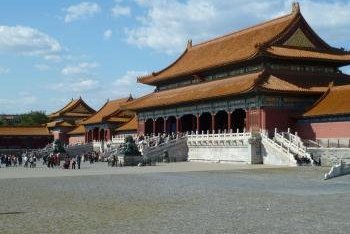
I must admit I wasn't especially looking forward to this visit; it had more of a feeling of something I should do rather than wanted to do. However after a few hours of strolling around the Forbidden City I was happy that I had seen it and ducking off to the sides could make it a surprisingly quiet experience even on a weekend afternoon.
The sheer size of the first part of the palace is what really grabs you, as Ben has stated below it takes a massive site to be able to swallow these large crowds and it certainly did that, it would be odd to see such large spaces with only a small amount of people in them. The main temples and pavilions really were impressive and I spent a fair bit of time just taking in their wonderful architecture and paintings.
After the grand ceremonial buildings at the front the rear of the palace is a series of interlocking courtyards and private palace quarters which were reasonably interesting, however the crowds felt a little denser here and I started to wane a little so decided to head on out before palace fatigue really set in.
I enjoyed my visit here more than I thought I would and the grand ceremonial parts of the complex allow you to get a sense of the awesome scale of the place as well as a chance to escape the crowds.
[Site 7: Experience 7]
Keep reading 0 comments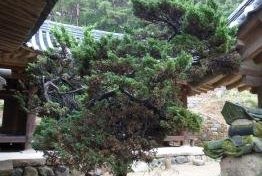
I must admit when I first arrived at Yangdong I was distinctly unimpressed. Bus 203 dropped me off in a rather muddy car park and I was left looking through the drizzle at some tour groups walking around a cluster of wooden houses on a small hill.
I walked around these houses for a couple of minutes and wondered if this was all there was to see. Fortunately a friendly local gave me a map of the village and I realised it was actually much larger, so off I trotted over the hill to investigate further. I enjoyed looking into some of the houses that were open and visiting the ‘Folk Treasures’ Seobaekdang was my favourite. All in all it was a pleasant place to stroll around and relax but there was not a huge amount to do.
This was the second "folk village" I have visited from the World Heritage list and I was left with a similar feeling that I had after calling into Holasovice, it is nice that there are some representations of low key rural life on the list (even if this particular village was more for the rural elite) however they are not the most impressive places to visit.
I visited Yangdong on a morning sojourn from Gyongju and it was a nice trip. There is now a direct bus that runs up there from the city centre every 90 minutes. It seems that the village is transforming into more of a tourist destination …
Keep reading 0 comments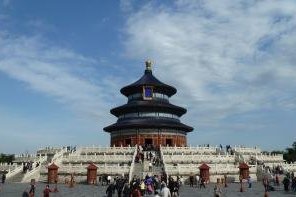
Fresh off the plane I went for an early morning stroll around the Temple of Heaven and the surrounding park, which provided the best possible start to my 5 days in Beijing. I sat down with the tasty jianbing bought off a street vendor and relaxed watching the Beijingers go about their morning rituals whilst I celebrated the arrival of my little nephew Thomas. All in all the perfect way to start my trip.
The temple buildings were very impressive, I would recommend starting from the south and working your way north, as this is the traditional processional route and the structures become more impressive as you go allowing you to finish at the magnificent Hall of Prayer for Good Harvests.
Whilst I enjoyed the buildings the thing I most enjoyed was strolling around the park people watching. It was great seeing the old men doing water calligraphy, mass participation Tai chi, practice sword fighting and line-dancing to Europop. However the thing that most captivated me was the people who congregated en-masse to sing. It happened throughout the park but my first encounter with it was when around 1,000 people all gathered to belt out something that sounded like Opera. The sensation was incredible as people all just walked up and started singing in harmony, I had the same tingling sensation I get when I walk into the home stand of my favourite football team. I just wished I knew what they were singing as I would have loved to …
Keep reading 0 comments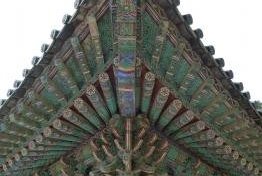
These two sites were a rather pleasant way to start my exploration of South Korea. I started at the small Seokguram Grotto, I was impressed by the quality of the carving inside. It is very small but of a high quality, reminding me of my visit the previous year to Ellora. After this brief viewing it was a lovely stroll back down to Bulguksa, the 2,5km walk led me through some lovely forests which were starting to show the first colours of autumn.
Bulguksa was a pleasant temple to walk around with some fine examples of wooden architecture and some rather lovely painted panels. There were lots of Korean children running around and practicing their English on me which was nice, but it was also easy enough to get a little peace and quiet when I needed to by sloping off to the other side of the tranquil ponds dotted around the sanctuary.
These were a lovely way to start my WHS collection in Korea, and an easy and worthwhile afternoon trip from Gyongju.
[Site 5: Experience 6]
Keep reading 0 comments
On a day trip from Vienna we travelled to Rust, by far the most famous resort aside the Neusiedlersee. It has a beautiful town square which makes most of the town. You can view some storches nests on the chimneys and buy local wine and pumpkin. Rust also has views of the famous reed steppe and the birds which attend it. You can also hike for 20 minutes to a beach. I was somewhat disappointed there is no spot where you can have a clear panorama of the lake but later found out this is true for all of the towns along its shores. This is the result of both the hight reed and its ever changing form. I certainly agree with one of the reviews I read that although the Neusiedlersee constitutes a unique environment which is the result of human interaction with nature, it is very difficult to experience this on your visit. Still it is a very nice rural area and worth the trouble of coming.
Keep reading 0 comments